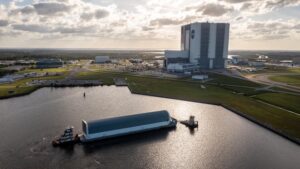Cost and schedule overruns continue to grow for NASA programs
By Jeff Foust

WASHINGTON — NASA suffered increasing cost overruns on its major programs again in 2020, a problem a new report says will be exacerbated by the pandemic.
The annual report by the Government Accountability Office (GAO) on major NASA programs, published May 20, found that costs of those programs grew by more than $1 billion in 2020, the fifth year in a row overall costs increased.
The cumulative cost overrun of 20 major programs in development, defined as those with total costs of at least $250 million, grew to more than $9.6 billion in the report. Three programs — the James Webb Space Telescope, Orion spacecraft and Space Launch System — account for $8 billion of that total, including $4.4 billion for JWST alone.
SLS and the Exploration Ground Systems program accounted for effectively all of the $1.1 billion in overruns in 2020. Smaller overruns on other programs, including the NASA-ISRO Synthetic Aperture Radar spacecraft and Low Boom Flight Demonstrator, were offset by other programs coming in slightly under their budgets.
SLS alone accounted for nearly $990 million in cost increases. About two-thirds of that increase came from NASA adopting a GAO recommendation to lower the original baseline cost estimate for SLS to properly account for work that had been shifted to later phases of the program.
Major NASA programs also have 19.7 years of cumulative schedule delays, led by JWST’s 7.3 years. Those schedule delays increased by 37 months in the latest assessment, including eight months each for SLS and Exploration Ground Systems and seven months for JWST.
Some of those latest delays, GAO noted in its report, were caused the pandemic, which limited access to facilities and disrupted supply chains. However, it cautioned that the overall cost and schedule impacts of the pandemic on major NASA programs have yet to quantified.
“NASA’s major projects in development have yet to experience the full extent of COVID-19 effects, and challenges will remain as the pandemic continues,” the GAO stated in its report. “Nearly all of the projects report having experienced some challenges related to COVID-19 in the past year.”
The GAO report did not estimate the potential impacts of the pandemic on those programs. However, a March report by NASA’s Office of Inspector General estimated that the total costs to the agency from the pandemic could reach $3 billion, with about $1.6 billion of that coming from major programs like those tracked by the GAO.
“NASA will continue to monitor and address the cost and schedule impacts of COVID-19 on its major projects,” Steve Jurczyk, at the time NASA’s acting administrator, said in an April 30 letter responding to the GAO’s assessment and included in the final report. “A final accounting of the full impact of COVID-19 on Agency activities will not be available until well after the Agency and its contractors and partners are operating in a post-pandemic environment.”
One example of that ongoing assessment of pandemic-related impacts involves the Orion program. The GAO reported that the pandemic caused delays for production of the European Service Module for the Orion spacecraft that will fly the Artemis 2 mission in 2023. A lack of schedule margin means “any further production or testing delays will likely result in additional schedule delays to the Artemis II mission.”
The Orion program, the report stated, will perform an updated cost and schedule analysis in the fall because of past cost increases that will refine the launch date for the Artemis 2 mission and costs associated with any new delays.
In the near term, the GAO noted the potential for cost and schedule issues with the upcoming Artemis 1 mission, nominally scheduled for November 2021 but widely expected to slip into early 2022. The core stage of the SLS arrived at the Kennedy Space Center last month for integration with the other elements of the vehicle and the Orion spacecraft, all first-time activities that agency officials have warned could result in delays.
“Our prior work has shown this phase of the acquisition process often reveals unforeseen challenges leading to cost growth and schedule delays,” the GAO stated in its report.
May 24, 2021 at 04:57PM
via SpaceNews read more...

Post a Comment